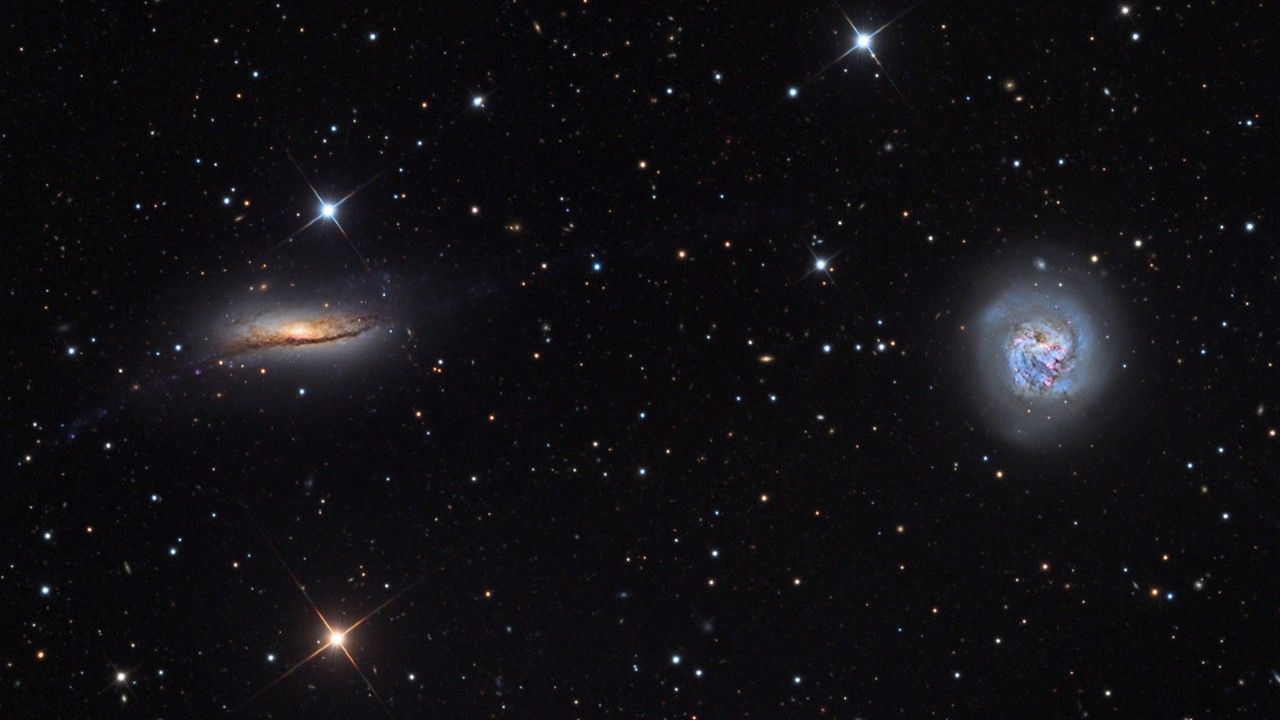BREAKING: New observations reveal critical insights into the future of the Milky Way and its closest neighbor, the Andromeda Galaxy. Researchers have confirmed that two colliding galaxies, NGC 5713 and NGC 5179, located 88 million light-years away, are transforming the understanding of galactic mergers.
The findings, just published in the Monthly Notices of the Royal Astronomical Society, suggest that the collision dynamics of these galaxies could parallel the eventual fate of the Milky Way and Andromeda, which are currently 2.5 million light-years apart and on a collision course that will culminate in about 4 billion years. This research is not just academic; it may redefine key aspects of cosmology and our understanding of galaxy formation.
Astronomers, led by Sarah Sweet from the University of Queensland, have detailed how the gravitational interactions are causing a cluster of dwarf galaxies around NGC 5713 and NGC 5179 to shift into a co-rotating, flattened orbital plane. This discovery challenges existing models of galaxy formation, which struggle to account for the orderly arrangements of dwarf galaxies observed around larger galaxies like Andromeda and the Milky Way.
“We think that the satellites would likely have orbited randomly in more of a cloud than a disk prior to the massive galaxies’ approach,” Sweet stated. Currently, 14 dwarf galaxies have been confirmed in this system, with more candidates awaiting verification. This structured arrangement of dwarf galaxies raises questions about the current understanding of the dark matter halo surrounding these celestial bodies.
The implications of these findings extend beyond NGC 5713 and NGC 5179. The ongoing collision provides a case study for astronomers to predict the outcomes of the Milky Way and Andromeda merger. Previous analyses suggest there is only a 50% chance of a direct collision during the initial approach, although gravitational forces will eventually lead to a merger over the next 10 billion years.
As scientists continue to explore the complexities of these interactions, they are looking to uncover whether the Milky Way and Andromeda will exhibit behaviors consistent with other galaxies or whether they will follow a unique evolutionary path. The dynamics observed in NGC 5713 and NGC 5179 offer a crucial opportunity for understanding these processes.
The study led by Helmut Jerjen of the Australian National University posits that the dwarf galaxies’ transition into a co-rotating plane is a significant step in galaxy evolution, suggesting they may have adhered to a filament of dark matter known as the Boötes strip. This revelation could reshape theories about the formation of galaxy satellite systems, as current cosmological simulations often fail to replicate such structures.
As astronomers delve deeper into the orbits of these dwarf galaxies, the research could lead to critical advancements in understanding our own galaxy’s formation history. The Hubble Space Telescope is expected to provide further insights over the next five years, allowing researchers to trace the origins of these satellite galaxies.
With the Milky Way and Andromeda’s eventual merger looming on the cosmic horizon, the urgency of these findings cannot be overstated. As scientists piece together the mysteries of our universe, the implications for our understanding of dark matter and galaxy formation remain profound.
Stay tuned for more updates on this developing story as astronomers continue to explore the cosmos and what it means for our galactic future.
